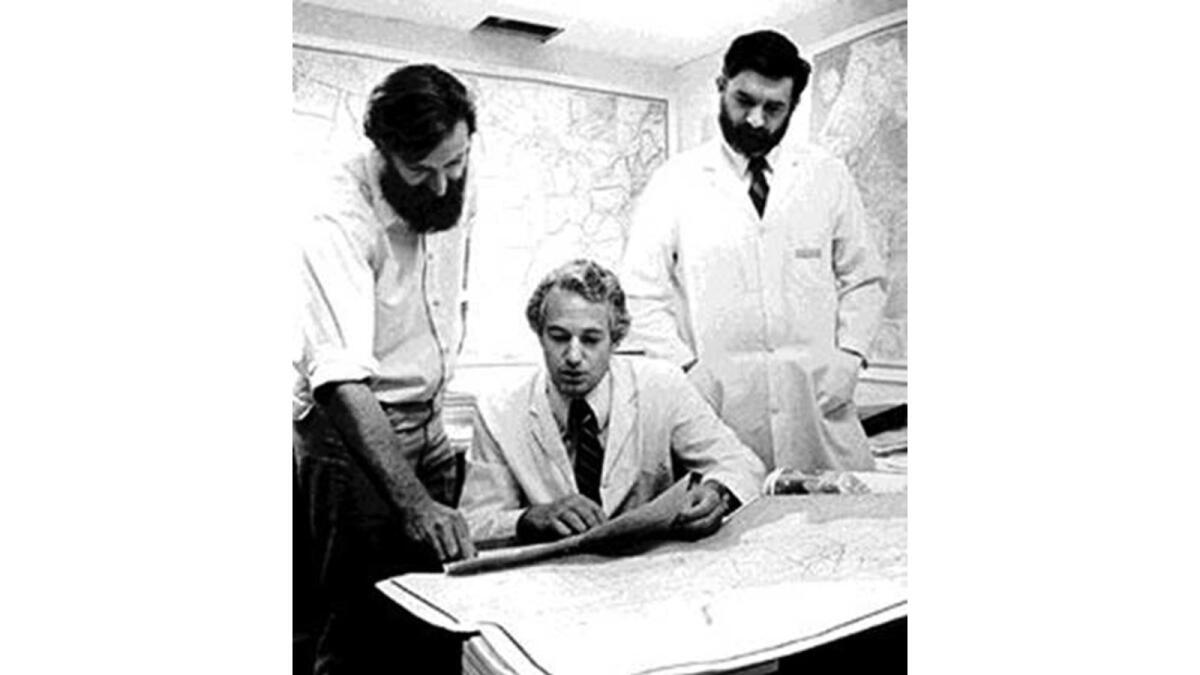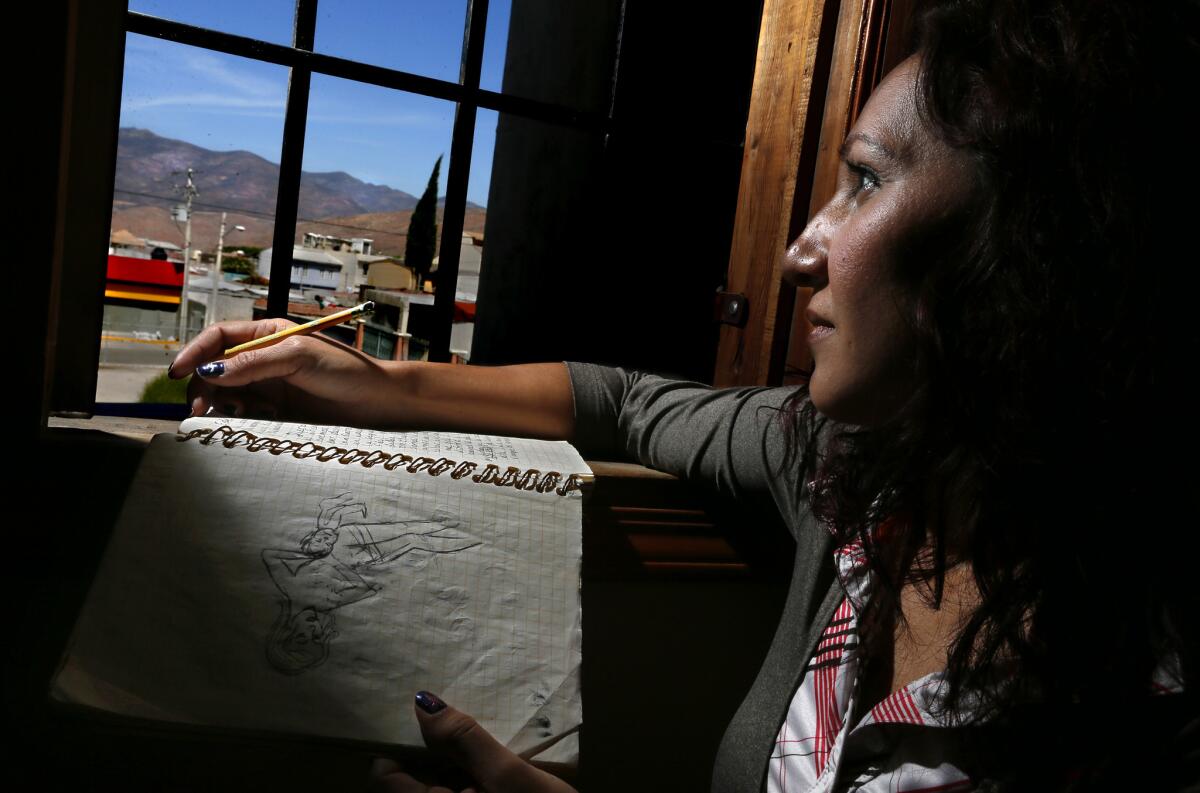Newsletter: Great Reads: Handmade houses and Raymond Chandler’s early years in L.A.
- Share via
Hey there. I'm Kari Howard, and I edit the Great Reads (a.k.a. Column Ones) for the Los Angeles Times.
Two of my biggest loves are narrative journalism and music, and I'm lucky that my days are filled with both: When reading the stories, I get inspired by songs I think fit the article's theme — a soundtrack.
Here are some of the past week's Great Reads, plus their soundtracks.
What happens when you cross Anthony Bourdain and a coffee snob?
Jason Song's adventures in coffee roasting in Japan are such a good read. He's been roasting single-origin coffee in his backyard in L.A. for years. He tells himself that it's cheaper to buy green coffee beans at $7 a pound than pay $3 for a single cup in a store, but he's come to look forward to the small surprise of having a different kind of coffee at home every week. (He's partial to single-origin, light roasts, not dark blends a la Starbucks.) So when a friend who works for a small Japanese coffeehouse chain asked him to come over for a few weeks to roast beans his way and introduce them to Japanese consumers who prefer your basic dark diner joe, he was all in. Love the first paragraph of the story. How, exactly, did I end up on the roof of a coffeehouse in Tokyo, kneeling over a single-burner camp stove and something called a Whirley Pop? (Oh, this story has a soundtrack and a coffee accompaniment: Jason gave me a medium-roast Kenyan, and I drank it as I worked the piece.)
Times reporter Jason Song pours hot water over freshly ground coffee beans at his South Pasadena home. He's been roasting single-origin coffee in his backyard for years. (Brian van der Brug / Los Angeles Times)
The soundtrack: "Black Coffee in Bed," by Squeeze. By all rights, I should listen to Squeeze all the time. They wrote some of the best pop songs of their time — great hooks and clever lyrics. But years go by without a listen. Does anyone else have that: a band you love in theory but not in practice?
A classic "who knew?" story about 1.7 million cases of cancer — and counting
Did you know that every single case of cancer in Los Angeles County has been tracked and put in a registry since the 1960s? I had no idea. The program director describes it as a monumental task. In the 1970s and '80s, he says, staff hopped in their cars and drove to each hospital and lab in L.A. County. They had to sort through hundreds of thousands of pathology reports, identifying those who tested positive for cancer. After they made photocopies of the reports, they put in requests to view the patients' medical records, which were stored away in manila folders. Then they copied the biographical information onto separate forms for each patient. "They'd fill in the blanks by hand on this pad of paper," he says. Back at the program's offices, there was one big computer, stored in its own room. "It broke a lot," he says. From there, another team would input the data into the computer, and the pathology reports were culled for additional information. "Back in the old, old, old days, they literally punched IBM cards," he remembers.
Poring over a county map, from left to right, Dr. Malcolm Pike, Dr. Brian Henderson and Dr. Thomas Mack are considered among the founders of the L.A. County Cancer Surveillance Program. (L.A. County Cancer Surveillance)
The soundtrack: "You Find It Everywhere," by Swervedriver. Shoegaze fans of the world, unite! But wait, you're too shy to do that, aren't you? Love the shimmering melodies of this song. This got me to listening to their latest album (and the first since 1997), "I Wasn't Born to Lose You," and I'm really liking it.
Bedtime stories told across the U.S.-Mexican border
You've probably read lots of stories about the deportations of immigrants back to Mexico. This story by Cindy Carcamo brings it home to every parent — or to anyone who has ever been read a bedtime story as a child. It tells of parents separated by the border who struggle to explain why they can't be with their children. One of them is Emma Sanchez Paulsen, who has spent the last 10 years in Tijuana, while her children are back home in Vista, Calif. On the many nights she spent alone, Sanchez Paulsen wrote what she describes as the most important bedtime story she’d ever tell — a fantastical tale about a young elf who joins with his brothers to battle dragons as they visit their mother in the land of the fairies. That narrative, “The Little Elf,” is now part of a collection of bedtime stories written by mothers and fathers living in Tijuana who have been separated from their families for a book project called “Cuentos Para Dormir,” or “Bedtime Stories.”
Emma Sanchez Paulsen gazes toward the hills of the U.S./Mexico border from her Tijuana bedroom window. Her husband and sons are on the other side, in Vista, Calif. (Don Bartletti / Los Angeles Times)
The soundtrack: "Book of Love," by the Magnetic Fields. This song is about romantic love, not parental love, but it has the great line, "I love it when you read to me." I remember the time a co-worker said he and his wife read to each other, which made me swoon. Reading can be so solitary — reading to each other creates a world the two of you share.
What I'm reading online
I'm a huge Raymond Chandler fan, and an even bigger one of L.A., so of course I was going to read this Longreads piece on his early years in Los Angeles. It took a little bit for me to get my head around writer Judith Freeman calling him "Ray," but she deftly weaves anecdotes about his life here with the current state of the places he lived. (Spoiler alert: mostly gone — one of the things I don't love about L.A., a city where history erases itself.) I love her description of the burgeoning Los Angeles: It was the first city in America to be packaged and sold like a commodity, marketed to the people of the United States just like automobiles or cigarettes or toothpaste through the cleverest of advertising campaigns. And this, on his writing about the city: Chandler had understood this city in a way no other writer had, how it was a place of extremes and addictions, cults and corruption, hedonism and a strangely virulent puritanism. “I was the first to write about Southern California in a realistic way,” he once said. “Now half the writers in the country piddle about in the smog. To write about a place you have to love it or hate it or do both by turns, which is usually the way you love a woman."
What's on my bedside table
A friend lent me "The House With Sixteen Handmade Doors," about a hand-built home in Maine, because he knows two things: I love 1) Maine, and 2) craftmanship. This book is a love letter to the man who single-handedly built the house the author bought as a second home in midcoast Maine. I'm not understating the idea of it being love letter. The author is smitten with the builder's work, even forgiving (or refusing to believe) any flaws: "But who can fault a builder for a leak here and there?" "Not wishing to believe that Phinney himself would use screws that were too long, I continued to think that the cabinet doors were made by someone else." I live in a similarly handmade home, a former hunting cabin, and this book makes me want to become a sleuth and learn more about the builder. For instance, I've always heard that he (surely it was a he?) had the diamond-pane windows brought over from England. Even if it's not true, I like believing that he might have gone to those lengths to get something perfect for the house he loved.
What's on my turntable
Although I spend most of my time listening with headphones to Spotify, sometimes I want to hear the needle touching down on vinyl. That's why I have a turntable in my office — and two at home (one inside, and a battery-powered one outside when the weather's fine — which it usually is in Southern California). This week's vinyl: "Ella & Louis," by Ella Fitzgerald and Louis Armstrong. It may seem that I only listen to pre-1970 music on my turntable, but that's only because I prefer old vinyl to new, not the least because it's cheaper. But also because that music was made for vinyl. And these two voices were made for each other. Like pancakes and maple syrup. (Oh, the exact album isn't on Spotify, but this is close.)
Want to chat? Have a great idea for a Great Read? I'm @karihow on Twitter and kari.howard@latimes.com on email.
Sign up for Essential California
The most important California stories and recommendations in your inbox every morning.
You may occasionally receive promotional content from the Los Angeles Times.










